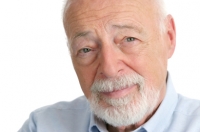Diagnostic Testing course for GPs



This session looks at the critical appraisal of diagnostic studies and how to inform decision making with regards to the salient features of diagnostic test results.
This session was reviewed by Khyati Bakhai and last updated in December 2020.
Learning Objectives
By the end of this session you will be able to:
- Formulate the question you want to research from a patient consultation
- Conduct a search for related studies
- Appraise a diagnostic study in terms of its applicability and methodology
- Use sensitivity, specificity and likelihood ratios to interpret the results
- Assess how this information will help you in future consultations by using clinical test papers in practice
In this session you will look at a paper that has been generated on the use of a diagnostic test in primary care.
Carl Heneghan is Director of the Centre for Evidence-Based Medicine and a practising GP. A clinical epidemiologist, he studies patients receiving care from clinicians, especially those with common problems, with the aim of improving the evidence base used in clinical practice.
His research interests include non-communicable diseases such as cardiovascular disease, and he currently chairs WHO guidelines on self-care and cardiovascular disease risk. He is also interested in the treatment of communicable diseases in primary care.
Professor Heneghan also investigates the evidence base for publication bias and drug and device regulation, and he is an international expert, advising governments, on the regulatory and evidence requirements for devices and drugs as well as evidence-based projects in the public interest. He is also a founder of the alltrials campaign.

- Anaesthesia | Physiology | Materno-fetal Circulati...
- Posted By eIntegrity Healthcare e-Learning
- Posted Date: 2025-02-22
- Location:Online
- This session will explain fetal circulation and the changes which occur at birth.
- Anaesthesia | Physiology | Functions of the Placen...
- Posted By eIntegrity Healthcare e-Learning
- Posted Date: 2025-02-22
- Location:Online
- This session will explore the functions of the placenta and will provide the necessary understanding for a doctor starting in obstetric anaesthesia.
- Anaesthesia | Physiology | Physiology of Pregnancy...
- Posted By eIntegrity Healthcare e-Learning
- Posted Date: 2025-02-22
- Location:Online
- This session will explore the changes in gastrointestinal, central nervous system, endocrine, renal and musculoskeletal physiology providing the necessary understanding for a doctor starting in obstetric anaesthesia.
- Anaesthesia | Physiology | Physiology of Pregnancy...
- Posted By eIntegrity Healthcare e-Learning
- Posted Date: 2025-02-22
- Location:Online
- This session will explore the changes in cardiovascular, haematological and respiratory physiology during pregnancy and labour, providing the necessary knowledge for a doctor starting out in obstetric anaesthesia.
- Anaesthesia | Physiology | Thyroid and Parathyroid...
- Posted By eIntegrity Healthcare e-Learning
- Posted Date: 2025-02-22
- Location:Online
- This session is split into two sections. The first outlines the physiology of the thyroid gland and homeostatic control of thyroid hormone secretion. The second describes and explains the body’s mechanisms for controlling plasma calcium concentrati







